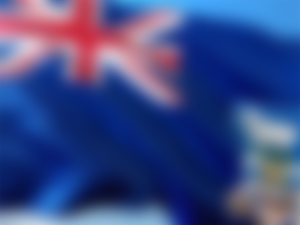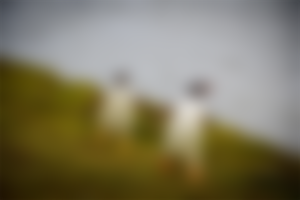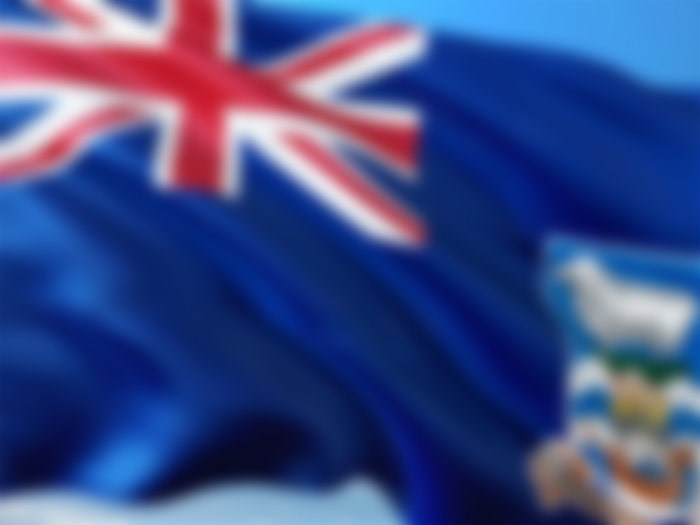1600 square kilometres for only 1800 inhabitants, all faithful subjects of Her British Majesty: but it was, on the other side of the ocean, that one could measure the density of Argentinean irredentism at the time when there was not a single schoolboy from Buenos Aires who, from the first class, had not learned the name of Las Malvinas by heart, thinking of when, when he grew up, he could take part in their liberation. Lonely, desolate and far away, the Falklands have no nationality, if not a hard life, in contact with the negative elements they can offer their population. In the now distant 1833, settlers set sail from Portsmouth (like the English fleet): robust people of Scottish origin, accustomed to life in the open air and bad weather; farmers and shepherds who, since the Victorian era, did not disdain the tremendous effort of the pioneers to reach the Promised Land. And there they have remained, until today, to raise sheep. The Argentineans have only gone there once in 150 years. But in 1982 the military junta decided to recover by force the British usurpers, those mythical, cold, uninhabited islands that everyone had heard about since the cradle: "Las Malvinas son Argentinas". They sparked a small world conflict, but after 74 days they had to lower the flag and watch the Union Jack flag fly up the flagpole. The Malvinas had returned to Falkland. So how was the war? Simple. The military governed and General Leopoldo Galtieri was the president. For Buenos Aires circulated the black Ford Falcon with the plaque covered, who went in search of rebel students, loaded them and took them to police stations to torture them. A group of their mothers had made a habit of gathering in the May square to ask about their children. The union had just called a big demonstration against the military. And these responded, on 1st April 1982, by occupying the Malvinas, inhabited in all by 2 thousand English settlers, the kelpers, with their sheep, the cold, and the frost and distance from the whole planet. A great propaganda action, nothing else, destined to inflame Argentine patriotism. A mother in the May square was photographed with a small sign: Las Malvinas son Argentinas. Los Desaparecidos Tambien. But in those days there was an air of victory. Foreign Minister Costa Mendez, who had studied at Oxford, said on television: "I know the English and their psychology well. They will never come to take these islands back". He was wrong. Margaret Thatener also had her problems, and although newspaper polls found that the vast majority of British people confused the Falklands with the Shetlands in the north of Scotland, she decided that the affront should be washed away. He organised a fleet of a hundred warships that crossed 8,000 miles of the Atlantic Ocean to take back that last forgotten crumb of the empire.

For the "Old Iron Lady", it was her great moment. It was a starter of the Gulf War, the Malvinas' war. International legitimacy wandered, the declaration of war was non-existent, the role of the UN was questionable, it was the first military expedition that imposed censorship on the press. The great mediators, from US Secretary of State Alexander Haig to John Paul II (who went back and forth between London and Buenos Aires), failed in their undertaking. London demonstrated how it was possible in a short time, in a modern country, to mobilise public opinion. Within two weeks, the consensus on the Thatcher hard-line reached almost one hundred per cent. The popular British newspapers were headlining: "Kill the Argies!". The war ended on 14 June with the surrender of Argentina. Shortly afterwards the dictatorship fell apart, and the conservatives won the elections in England. Of all the strength that Galtieri deployed, 80% were conscripted and came from the Northern provinces, Missiones, Corrientes, Santa Fe. They were catapulted to the Malvinas with war equipment in the desert: shoes, shirts, even mosquito nets. Most of the 2,000 victims died of cold. Many hundreds had their limbs amputated due to frost. The British arrived in heat-heated suits, with the award of the terrible Gurka, a painter following the Royal Navy, infrared instruments for night fights. The American satellites informed them of the Argentinean movements, a fact that the Argentines still consider today a great betrayal because after all, they say, Galtieri had warned Reagan of what would happen and he had given him the green light. In the 74 days of the war, both the Argentinean military junta and the Foreign Office issued daily communiqués. Many today are acknowledged to be false, on both sides. For example, the sinking of the Argentine cruiser General Belgrano (386 dead) took place far outside the war zone. The Argentines announced the sinking of the English cruisers "Invincible" and "Hermes" and it was not true. They announced the shooting down of 26 British Harrier planes, while there were only nine. They stubbornly denied that the ground war was being lost. Before the ground attack, they hoped for a solution to the conflict through Exocet missiles, produced by the French. A large number of international traffickers promised the Argentinians supplies that never arrived. Of the bloodiest ground battle, for the control of Goose Green, none of the parties ever gave exhaustive versions. The British, attackers, reported 12 dead. For the Argentineans, who were defending, the figure of 250 circulated unofficially. A disproportion, for military laws. Only after years, on the English side it was admitted that there was "overkilling" at Goose Green, that is, "excesses" were committed. A story of males and lack of fair play, Goose Green. It seems that the Argentineans raised a white flag and then opened fire. The British reacted by pulling the trigger even when they had already surrendered. Still today there are no official figures on the dead, the wounded, the assertors. The cemetery of the Argentinean fallen in the Malvine, the relatives of the victims can only visit it with enormous difficulty. In the Malvinas, there has never been anything other than seals, 2 million penguins and 27 species of seabirds. "If Kuwait had only produced broccoli", Bush would not have waged war, his opponents said a year ago. "And Saddam would not have invaded," the realists replied. The Malvinas, down there in the cold in the middle of nowhere, do not produce broccoli or oil. There are a few sheep, whose wool is worthless and less on the markets. And yet, a war broke out, a dictatorship fell and the minstrels sang.



Thanks!